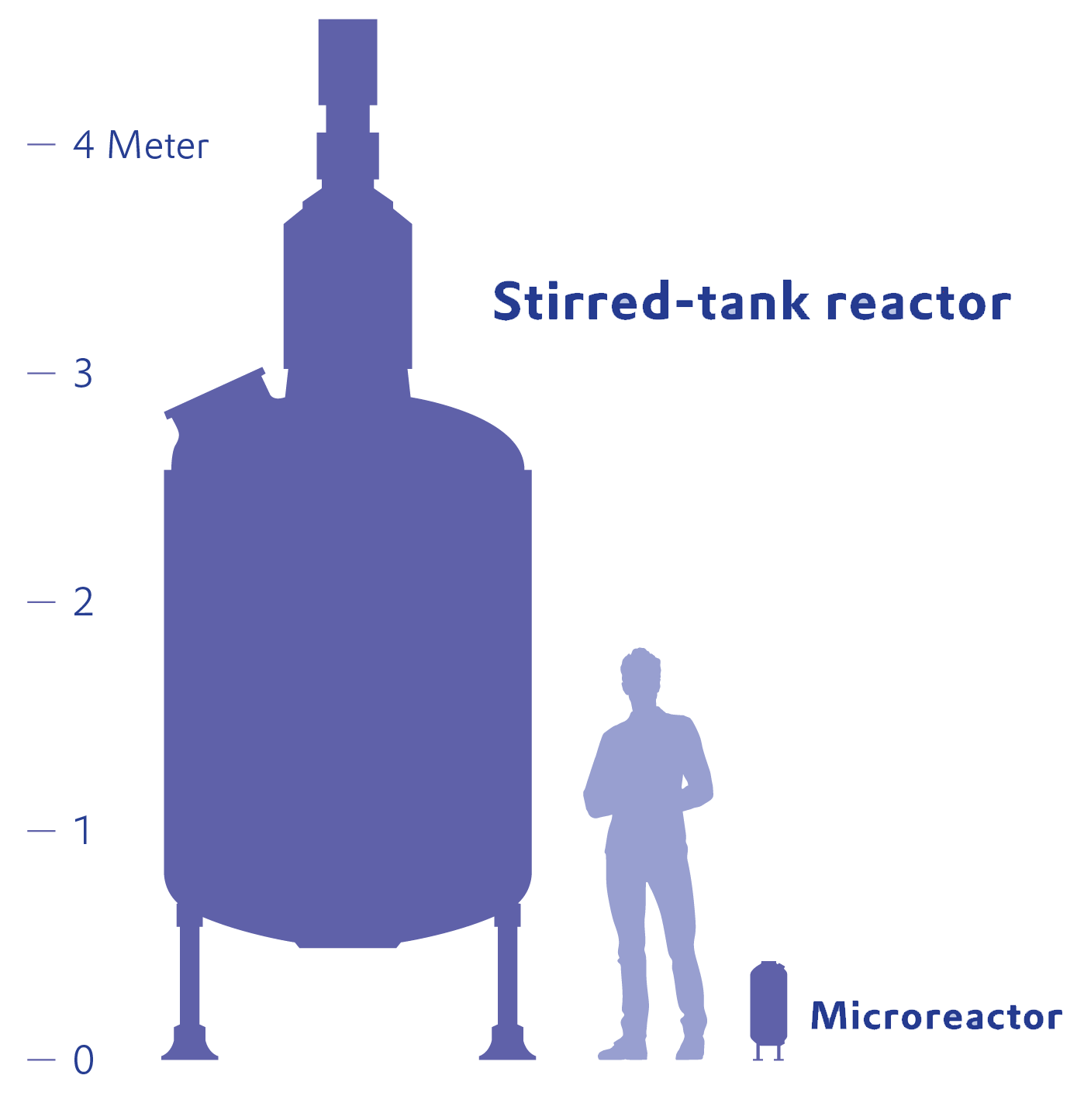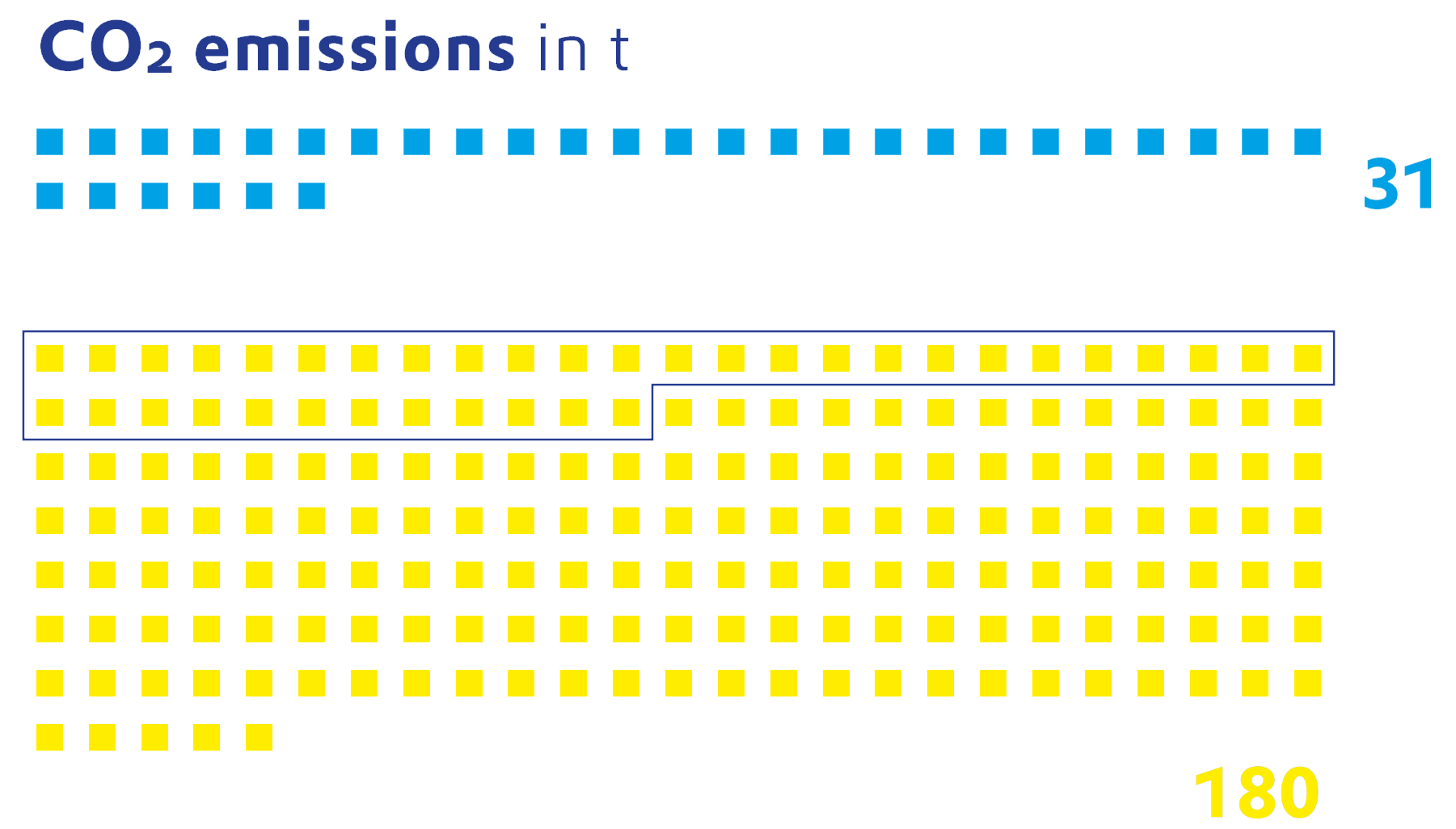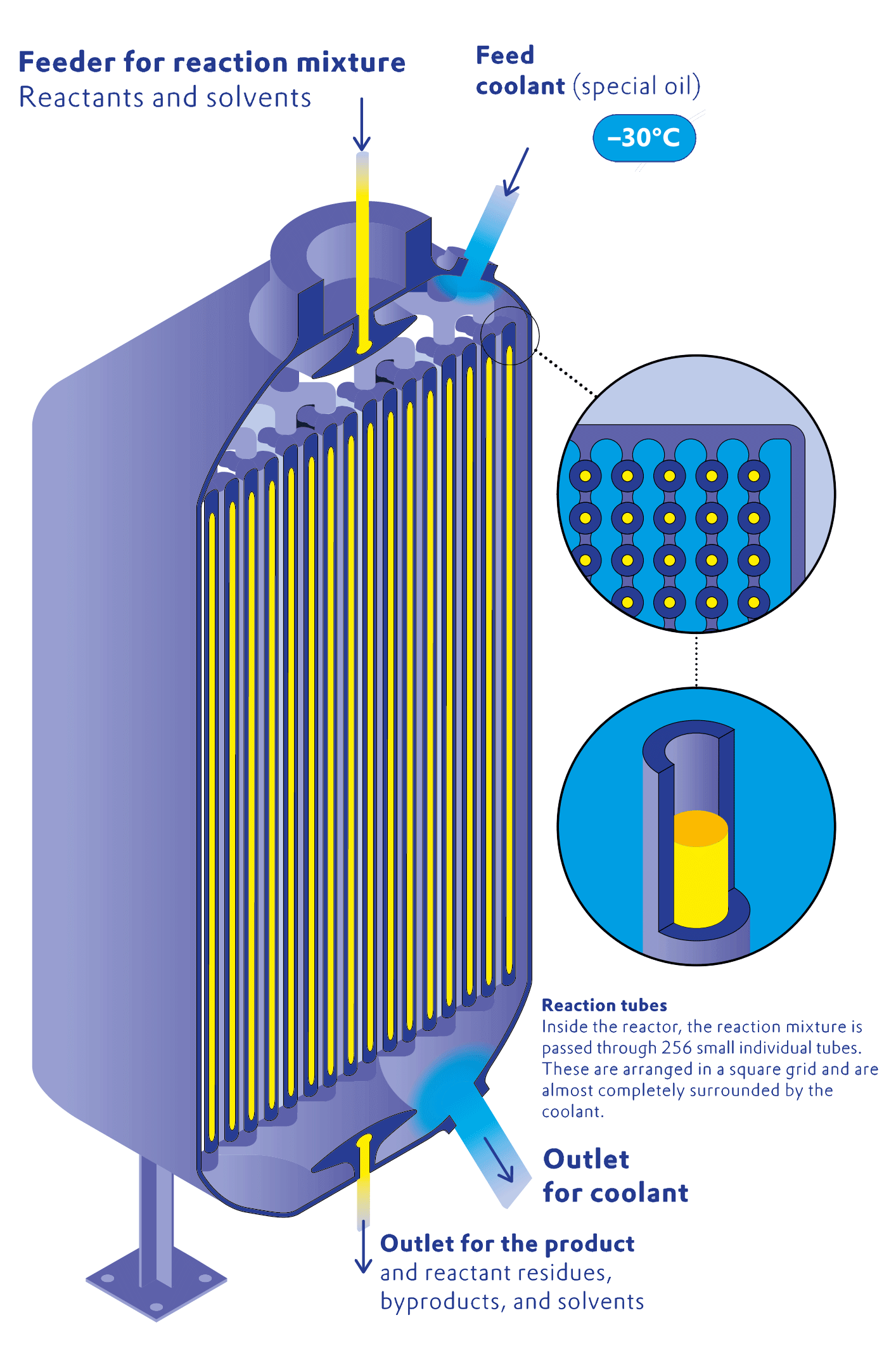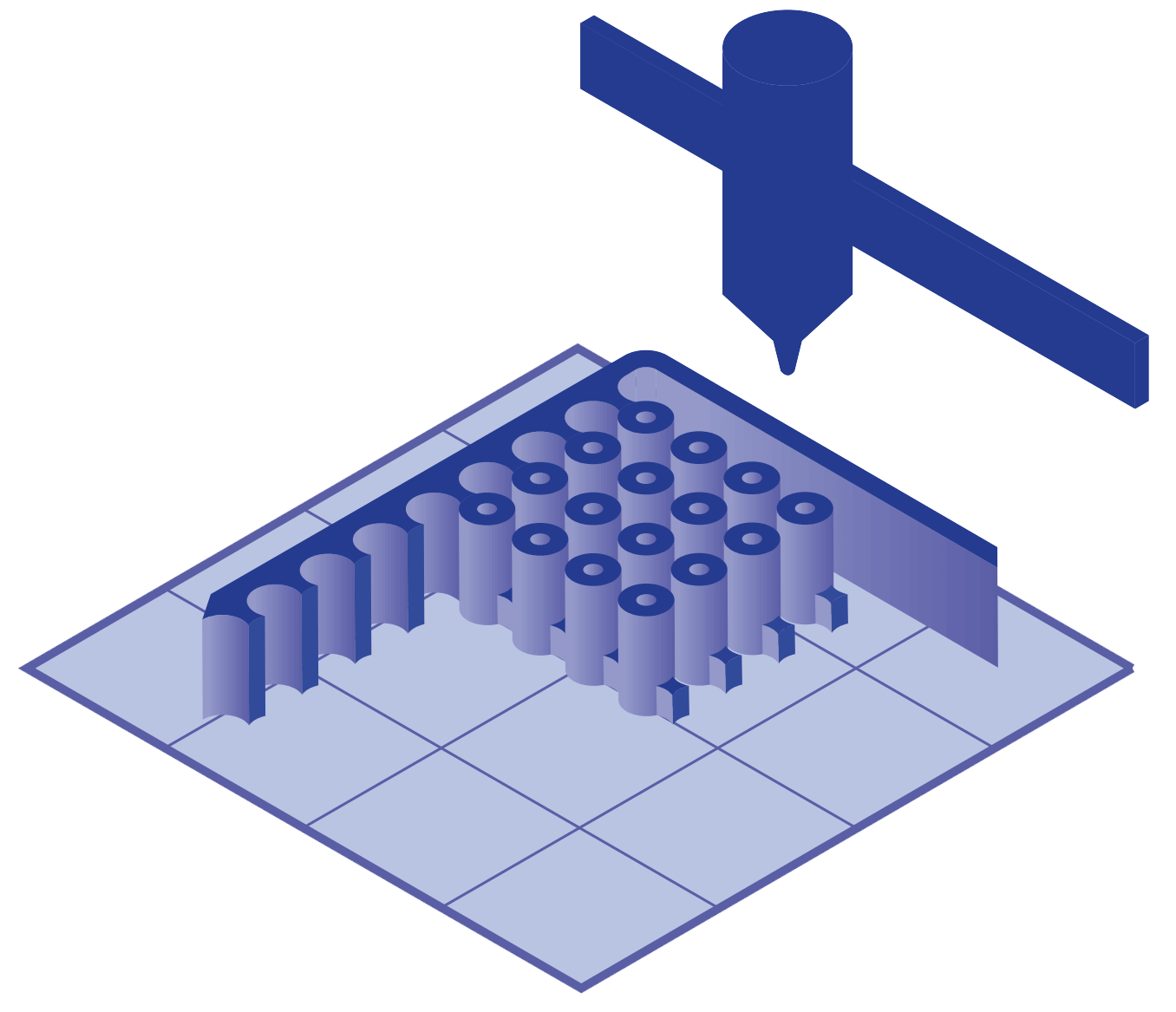Stirring tank reactor vs. microreactor
When chemicals react with each other, heat is often generated and has to be dissipated. Small flow tanks, which are manufactured using 3D printing, enable more efficient cooling than classic stirred tanks. A comparison of the two systems
publication date3RD AUGUST 2022
INFOGRAPHIC MAXIMILIAN NERTINGER
Stirred-tank reactor
☐ = Ø annual electricity consumption of 100 German households: 310
Source: destatis.de
Stirred-tank reactor
☐ = CO2 emissions of an Airbus A320 on a flight from Munich to Berlin: 37
Source: atmosfair.de
Read more here: Microreactors from the 3D printer
PUBLICATION DATE
2nd August 2022

Efficiency enhancement
Microreactors from the 3D printer
Additive manufacturing opens the door to lower CO2 emissions and less energy consumption in chemical production.

Chemical Production
A reactor with a good energy balance
Researchers in the ROMEO project have developed a process that makes an industrial reaction more energy-efficient.

Climate Change
More efficiency for climate protection
Despite many setbacks, an increase in energy efficiency is still the most viable way to limit the effects of global warming.

Additive manufacturing
The printed plant
Good for the environment and for cost-efficiency: Evonik is using plant components created by 3D printers to construct its own facilities.







